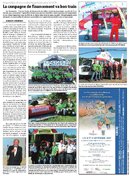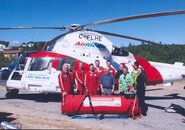hyperbaricjosh
Guest
Here are some pictures we have taken back in September 2007 when we introduce the Hyperlite in the remote area of Les Escoumins. Notice this is a Dauphin A365 rescue helicopter and we managed to fit the Hyperlite in the helicopter. You can see the pictures on the Hyperlite web site. The protocoles we are using for transfering a patient were developped by the US Navy. We also developped a CO poisoining treatment protocoles. Keep in mind that an unconscious patient would not be allowed in the Hyperlite for obvious reason that you do not have access to the patient. However the Hyperlite has a penetrator plate where various patient monitoring device can be introduced. I understand that the price for a unit may sometime scare a certain clientele however what I can tell you is that we were able to raise $100K for the whole program in a municipality that has 1200 permanent resident we were able to do this in one year. We are also most likely putting another one where the population is no greater than 1500 resident. It takes some convincing to certain people but they understand the needs to have such device available for the safety of their tourist divers.






